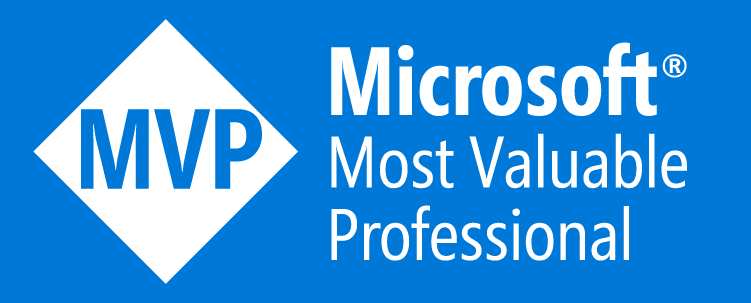This article introduces a hack that allows access to internal, non-public members of the UNO framework. This includes calling non-public API methods and properties, and accessing non-public types within UNO.
The core principle is based on the InternalsVisibleToAttribute assembly attribute in the UNO framework, which is made visible to assemblies such as SamplesApp. Therefore, all you need to do is create a new assembly and set the AssemblyName to SamplesApp.
Below is a new project I created called UnoHacker. You can find all the code for this project at the end of this article.
The UnoHacker project I created uses the net8.0 framework. Since the method provided in this article strongly depends on the implementation of the UNO framework, this article was written in June 2024. If you read this article a long time after it was written, it may contain knowledge that is not applicable to the UNO framework you are currently using.
This article is aimed at version 5.2.161 of the UNO framework. It does not represent that subsequent UNO versions will also be applicable. It is recommended that you test it yourself according to the method provided in this article.
Edit the csproj project file of the UnoHacker project, first configure the AssemblyName property to specify the assembly name, as shown in the following code:
<!-- The assembly uses a special name so that it can access the internal API. -->
<PropertyGroup>
<AssemblyName>SamplesApp</AssemblyName>
</PropertyGroup>
Next, add a reference to Uno.WinUI. Adding this reference is just to get the actual UNO reference assembly, not really needing to reference this package. That’s why the following code needs to add ExcludeAssets="all" code that does not use any content. The following code also adds the GeneratePathProperty attribute configuration, which can be used to get the path of the corresponding package in the cache folder through this attribute configuration, which is used to reference the content in the package.
<!-- Only to get the NuGet directory, do not use any content (including compile;runtime;build, etc.) -->
<ItemGroup>
<PackageReference Include="Uno.WinUI" GeneratePathProperty="true" PrivateAssets="all" ExcludeAssets="all" />
</ItemGroup>
Since central package management is used by default, the above code reference does not need to add a version number. After adding the above code, you can ensure that the NuGet package exists locally, and through the GeneratePathProperty attribute configuration, you can get the local path of the Uno.WinUI package through the $(PKGUno_WinUI) attribute.
The content of the $(PKGUno_WinUI) attribute I got on my device is as follows:
C:\Users\lindexi\.nuget\packages\uno.winui\5.2.139
Through this, you can splice the path and get the files in the NuGet package. The following code uses the actual UNO under the Skia platform:
<!-- Reference the net8.0-desktop assembly that is really effective, not the assembly dedicated to reference. -->
<ItemGroup>
<Reference Include="Uno" Private="False">
<HintPath>$(PKGUno_WinUI)\uno-runtime\net8.0\skia\Uno.dll</HintPath>
</Reference>
<Reference Include="Uno.UI" Private="False">
<HintPath>$(PKGUno_WinUI)\uno-runtime\net8.0\skia\Uno.UI.dll</HintPath>
</Reference>
<Reference Include="Uno.UI.Composition" Private="False">
<HintPath>$(PKGUno_WinUI)\uno-runtime\net8.0\skia\Uno.UI.Composition.dll</HintPath>
</Reference>
</ItemGroup>
What needs to be explained here is that the assembly that UNO allows you to write code references, and the DLL assembly that is finally output after publishing are not the same file. The assembly that allows you to write code is under the Lib folder in the NuGet package, and the actual published output is the DLL is under uno-runtime. By using different DLLs, UNO can better support multiple different platforms, and different DLL outputs can be used for different platforms.
The code of the csproj project file after completing the above code is roughly as follows:
<Project Sdk="Microsoft.NET.Sdk">
<PropertyGroup>
<TargetFramework>net8.0</TargetFramework>
<OutputType>Library</OutputType>
<ImplicitUsings>enable</ImplicitUsings>
<Nullable>enable</Nullable>
<DefineConstants>$(DefineConstants);HAS_UNO</DefineConstants>
<!--
UnoFeatures let's you quickly add and manage implicit package references based on the features you want to use.
https://aka.platform.uno/singleproject-features
-->
<!--
<UnoFeatures></UnoFeatures>
-->
</PropertyGroup>
<ItemGroup>
<PackageReference Include="SkiaSharp" />
</ItemGroup>
<!-- ================ !!! UNO HACKER !!! ================ -->
<!-- The assembly uses a special name so that it can access the internal API. -->
<PropertyGroup>
<AssemblyName>SamplesApp</AssemblyName>
</PropertyGroup>
<!-- Only to get the NuGet directory, do not use any content (including compile;runtime;build, etc.) -->
<ItemGroup>
<PackageReference Include="Uno.WinUI" GeneratePathProperty="true" PrivateAssets="all" ExcludeAssets="all" />
</ItemGroup>
<!-- Reference the net8.0-desktop assembly that is really effective, not the assembly dedicated to reference. -->
<ItemGroup>
<Reference Include="Uno" Private="False">
<HintPath>$(PKGUno_WinUI)\uno-runtime\net8.0\skia\Uno.dll</HintPath>
</Reference>
<Reference Include="Uno.UI" Private="False">
<HintPath>$(PKGUno_WinUI)\uno-runtime\net8.0\skia\Uno.UI.dll</HintPath>
</Reference>
<Reference Include="Uno.UI.Composition" Private="False">
<HintPath>$(PKGUno_WinUI)\uno-runtime\net8.0\skia\Uno.UI.Composition.dll</HintPath>
</Reference>
</ItemGroup>
<!-- ================ !!! UNO HACKER !!! ================ -->
</Project>
Try to write code to test access to UNO’s non-public members:
using Windows.UI.ViewManagement;
using Microsoft.UI.Windowing;
#if HAS_UNO
using Windows.UI;
using Uno.UI.Xaml.Core;
#endif
namespace UnoHacker;
public static class ApplicationViewExtension
{
#if HAS_UNO
public static ApplicationView GetApplicationView(this AppWindow appWindow) =>
ApplicationView.GetForWindowId(appWindow.Id);
#endif
}
You can see that the code is very convenient to write, and it avoids using reflection, which has higher performance.
Through this method, you can use some non-public members in UNO to achieve some specific requirements. But it must be stated that UNO does not make a stability commitment to non-public APIs. You need to conduct sufficient tests when using them.
The code of this article is placed on github and gitee. You can use the following command line to pull the code:
First create an empty folder, then use the cd command to enter this empty folder in the command line, enter the following code in the command line, and you can get the code of this article:
git init
git remote add origin https://gitee.com/lindexi/lindexi_gd.git
git pull origin 5a2adba87164ab5c2de480cb4f04a8e28bb28bce
The above uses the gitee source. If gitee cannot be accessed, please replace it with the github source. Please continue to enter the following code in the command line to switch the gitee source to the github source to pull the code:
git remote remove origin
git remote add origin https://github.com/lindexi/lindexi_gd.git
git pull origin 5a2adba87164ab5c2de480cb4f04a8e28bb28bce
After obtaining the code, enter the UnoDemo/UnoSkiaWeelelqairjiwarfekemGahinabai folder to get the source code.
本文会经常更新,请阅读原文: https://blog.lindexi.com/post/Accessing-Internal-Members-in-the-UNO-Framework.html ,以避免陈旧错误知识的误导,同时有更好的阅读体验。
如果你想持续阅读我的最新博客,请点击 RSS 订阅,推荐使用RSS Stalker订阅博客,或者收藏我的博客导航
 本作品采用
知识共享署名-非商业性使用-相同方式共享 4.0 国际许可协议
进行许可。欢迎转载、使用、重新发布,但务必保留文章署名林德熙(包含链接:
https://blog.lindexi.com
),不得用于商业目的,基于本文修改后的作品务必以相同的许可发布。如有任何疑问,请
与我联系
。
本作品采用
知识共享署名-非商业性使用-相同方式共享 4.0 国际许可协议
进行许可。欢迎转载、使用、重新发布,但务必保留文章署名林德熙(包含链接:
https://blog.lindexi.com
),不得用于商业目的,基于本文修改后的作品务必以相同的许可发布。如有任何疑问,请
与我联系
。
无盈利,不卖课,做纯粹的技术博客
以下是广告时间
推荐关注 Edi.Wang 的公众号

欢迎进入 Eleven 老师组建的 .NET 社区

以上广告全是友情推广,无盈利

